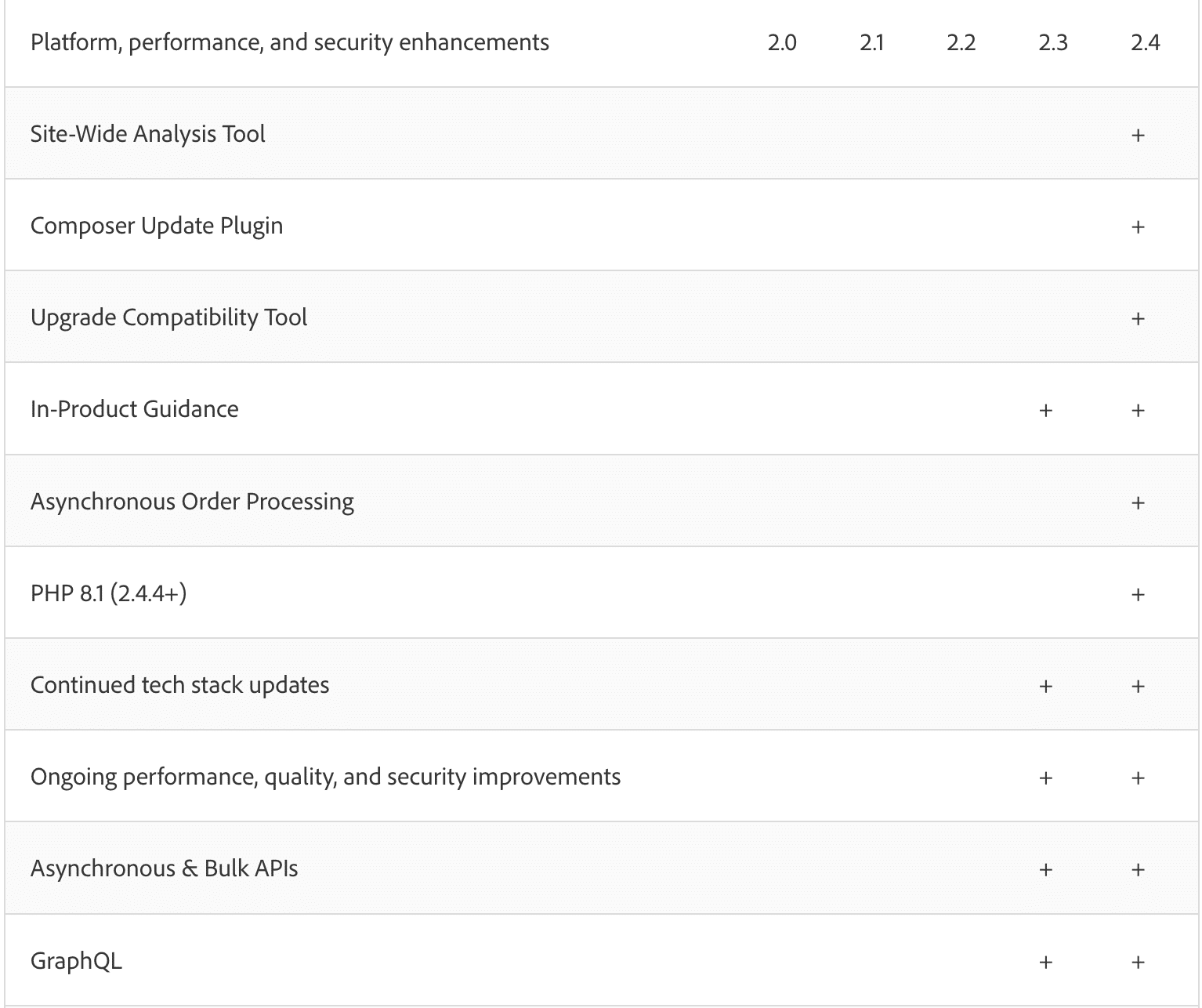
May 17,2024
Why you need to upgrade Magento
Upgrading Magento offers a wealth of benefits, yet many businesses remain reluctant to take the leap. Despite the compelling advantages, the process of upgrading can be perceived as complex and resource-intensive – and while this can be true, the benefits and safety that comes with upgrading should be enough cause to get businesses to capitalise on these improvements.
Upgrading Magento is not merely an update; it’s a strategic investment that can yield substantial improvements across various aspects of your ecommerce operations. This article looks at the range of benefits that come with upgrading your Magento store, as well as the risks associated with not upgrading.
Content List:
- Why People hesitate to upgrade
- Store security
- Performance Gains
- New features and capabilities
- Compatibility and support
- The “40 hour” investment
- Final thoughts
Why people hesitate to upgrade
Despite the numerous benefits, upgrading Magento can be a complicated process, however, the difficulty or length of time to complete should not be the factor as to why the upgrade is needed, nor take away from the numerous benefits.
Generally people might take a look at what’s involved in a Magento upgrade, for example, the budget, the time for development, the time for testing, as well as the risk of potential downtime and decide it’s not worth it. But all of this is mitigated by the risks associated with not upgrading, as well as the benefits if you do. While many companies might view the current version they are running as having ‘no issues’, or ‘working just fine for them’, they fail to consider the various risks associated with staying on an outdated version of Magento.
We mentioned in a previous article that “A Major release can take upwards of 40 hours to complete”, this timing as well as the budget that comes with that can be one of the main reasons people hesitate to upgrade their stores. However, what businesses can often fail to miss is that while this does take a while (which can increase the cost), these upgrades are always beneficial. Businesses should stay informed on the different Magento updates, what they offer and how they might improve their business.
Click here to view the Magento release notes
Why you should upgrade
Though people can be reluctant to upgrade, there are numerous reasons why it’s essential. We’ve put together the reasons why upgrading is so important.
Improve your store security
Upgrading Magento comes with critical security enhancements that address vulnerabilities present in older versions. By not upgrading your store to the most recent versions of Magento you leave your website open and more vulnerable to attacks; in fact, for a major update like going from 2.3 to 2.4, offers 250 quality fixes and enhancements alone.

This doesn’t mean you should wait and only do the large upgrades, it’s important you have the smaller patches applied, as these add vital fixes. With the upgrade to 2.4.5 from 2.4.4 there were 20 security fixes and platform security improvements.
Furthermore, this upgrade introduces a range of additional security enhancements such as:
- reCAPTCHA support has been added to the Wish List Sharing
- Inventory template security has been enhanced.
- The MaliciousCode filter has been upgraded to use the HtmlPurifier library.
Something to keep in mind is that these improvements not only protect your store but also safeguard your customers’ data.
Performance gains
The investment in upgrading to Magento 2.4 pays off with noticeable performance improvements. Introducing speed optimisations and reduced loading times can significantly enhance user experience and boost conversion rates.
In fact, one of the most recent upgrades of 2.4.7 introduces faster loading of product listing pages, and a range of enhancements, which improve the overall user experience. This could be detrimental for your store.
Something to keep in mind is that users value speed. In fact 47 percent of consumers expect a web page to load in two seconds or less. So as a lot of these upgrades work to enhance and therefore speed up your website, we recommend you consider how this will impact your site, and users opinion of your Magento store if you don’t.
New features and capabilities
On one of the Magento release notes, they look at the different features for each upgrade.
The image below highlights significant change in features across different versions of the software. Notably, the jump from version 2.3 to 2.4 reveals a substantial evolution, with version 2.4, showing the additions they’ve made to the system from the earlier releases. This is consistent across: platform and security enhancements, speed improvements, and optimisation for maximising sales and the rest!

(source)
With each upgrade, these features will continue to evolve and expand. Versions of Magento that lag behind may miss out on these advancements, which have the potential to significantly enhance your store’s performance and capabilities.
Compatibility and support
Staying on earlier versions of Magento means missing out on official support and updates for several reasons:
- End of official support: As an example, Magento 2.3 reached its end of life for Magento in 2022, and as such Adobe no longer releases security or updates for it, leaving your store vulnerable to threats.
- Newer extensions, themes and integrations are worked on and updated to work with the latest versions of Magneto, and as such staying on early versions of Magento means you may encounter compatibility issues with third-party extensions and services. This can limit your website’s functionality, performance and more.
- As mentioned previously, Magento regularly introduces new features and enhancements for each version of Magento, but this is no longer the case with older versions. By not upgrading you miss out on accessing these features that would help to optimise your store.
Overall upgrading to a supported version ensures that your ecommerce store remains secure, up-to-date and equipped with the latest features that will support your business growth and success.
The “40-hour” Investment
The estimated 40 hours required for the upgrade encompass crucial tasks:
Planning and Preparation: Assessing current setup, system requirements, and backup strategies as well as reviewing any plugins that might be affected.
Execution: Performing the upgrade and thoroughly testing the upgraded site.
Post-Upgrade Checks: Verifying compatibility, resolving issues, and ensuring a smooth transition.
Final thoughts
Upgrading Magento demands time and effort, but the benefits are substantial. Improved security, performance gains, access to new features, and future support make it a worthwhile investment for any ecommerce business. All businesses should embrace the upgrade and take their online store to the next level!




